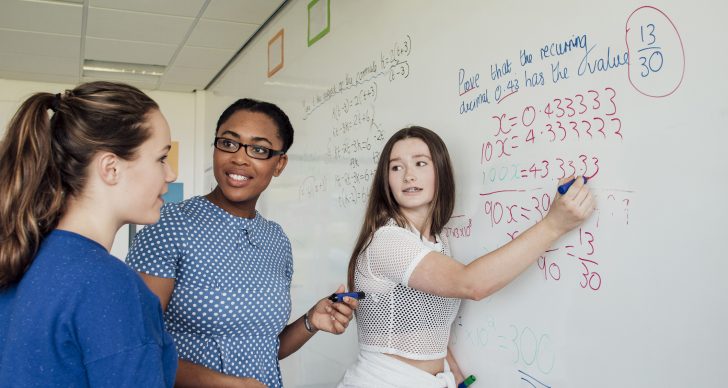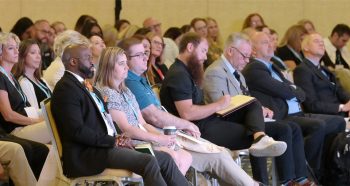As teachers around the world try to find new ways to support students who have experienced disrupted learning, I believe that Assessment for Learning (AfL) techniques are more important than ever. AfL is an approach that creates feedback between students and teachers to help structure and guide students’ learning. Feedback can be informal or formal, and can include peer and self-assessment. AfL aims to help students understand the objective of their learning, take responsibility for it, and plan how they might move forward.
So how can we integrate these techniques into maths lessons? Here are my top seven tips.
1. Listening is everything.
In maths it’s very easy to try and interpret what learners know by what they’ve written down. Especially in Early Years, the marks learners make on paper are not necessarily what they always mean and can hide the mathematical thinking that’s going on. Listening carefully to what they say (to each other and to you) can reveal more about how they are making sense of concepts.
2. Maths is not all about the grades.
When we mark homework or worksheets, we should try and avoid giving exact marks or grades and focus on writing comments that will help the learners to reflect on what they’ve done. For example, “I can see five errors in the work you’ve done. Can you find them and try to fix them?” You’re giving them feedback, but you’re not letting them ignore it.
3. Feedback should be active, not passive.
Give comments that encourage learners to engage with feedback and to engage with each other. Discussion is sometimes overlooked in maths, but sharing solution strategies is key: “you’ve found an answer, now talk to someone else and find out how they did it”.
4. The language of questioning is important.
In maths there’s often a misconception that there’s only ever a right and wrong answer. When you ask a student a closed question, such as “what is five times seven?”, you’re only testing their ability to recall facts. AfL is not about what they know, it’s about how they know it. Rather than asking for a specific answer, ask “how do you know that’s the answer?”, or “what can you tell me about this problem?”.
5. Peer-to-peer work is key to building a classroom culture.
In maths you need to constantly overcome this idea that the students are just learning facts and procedures. There’s a lot of power in talking about mathematical ideas, and using provocative statements is one way to encourage this: pose a conflicting statement (for example, “1/10 is double 1/5”) and ask the class to think and talk about it.
When learners talk about and explain their own ideas, they often reveal a lot of strengths and weaknesses.
6. Plan ahead for tackling common misconceptions.
Think carefully about potential gaps in knowledge. When students have a lot of time off school, as they have in many countries over the past year, this becomes even more important. Misconceptions in maths usually happen when students try and solve a problem by doing something that they think is perfectly logical – it’s not a guess, it’s not a mistake, they just have the wrong thinking behind it. The more they do it wrong, the more it becomes ingrained.
7. Set problems that have more than one, or less than one, right answer.
Think about questions where the most obvious answer might be wrong. This can help to reveal misconceptions and encourage deeper thinking. Open up the question as much as possible and always focus on the solution strategy rather than the answer. Pose problems that involve a lot of opportunities for thinking, discussion and justification. These can be particularly useful for AfL.
You can learn more about the Cambridge approach to AfL in this education brief.
The Cambridge Mathematics website is here: https://www.cambridgemaths.org/.
Our Espressos are filtered research articles on maths research, including this one on feedback in maths.
A version of this article appears in the latest issue of Cambridge Outlook magazine, read more at https://www.cambridgeinternational.org/news/newsletters/





